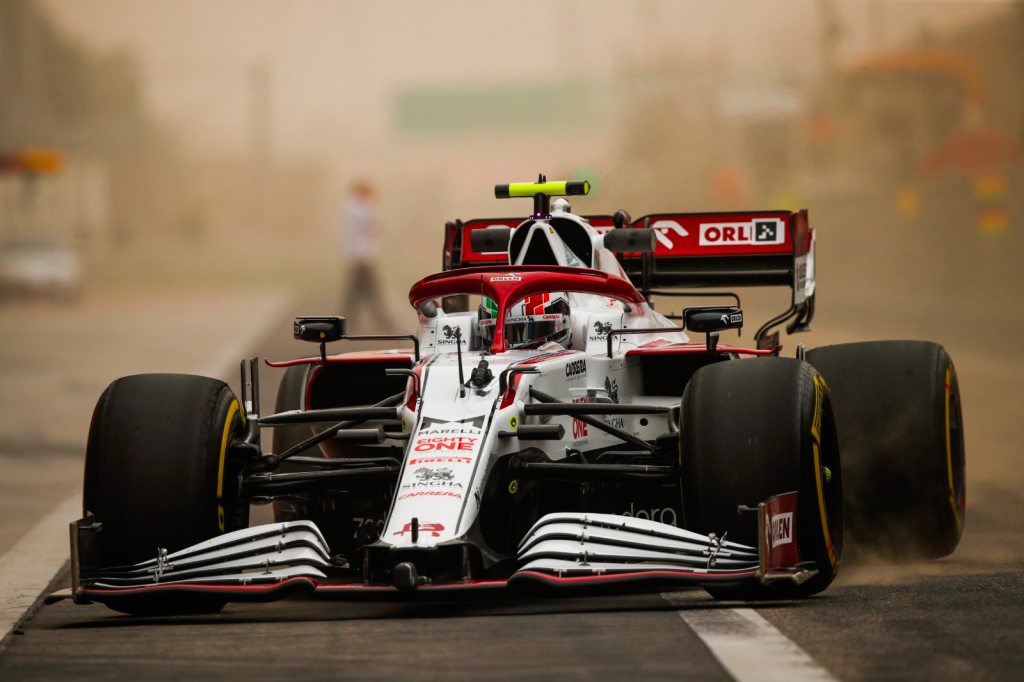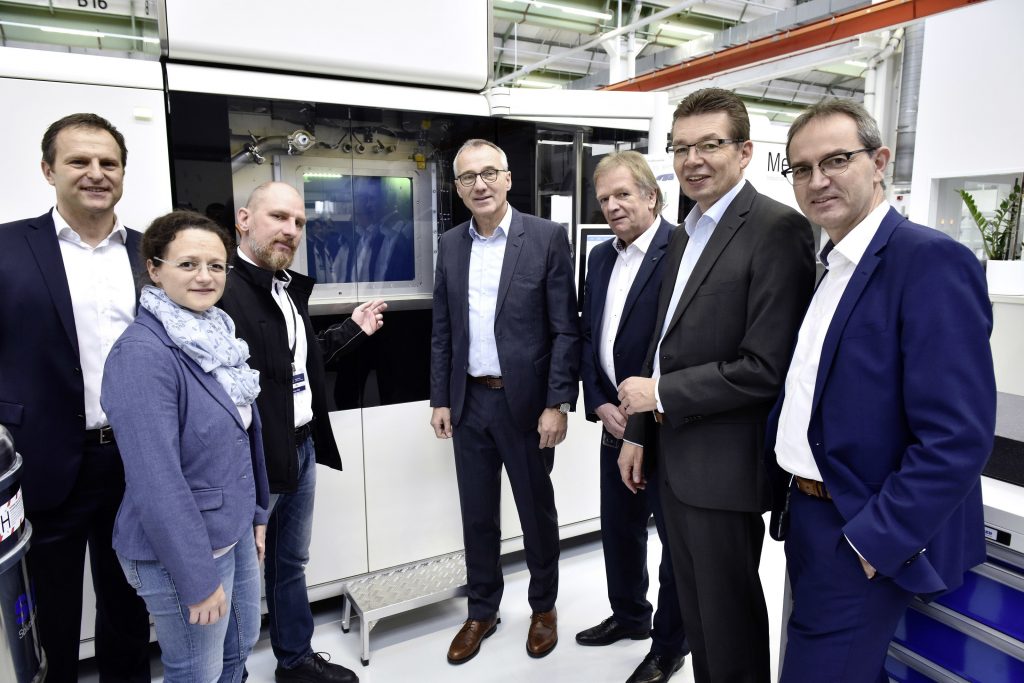The Alfa Romeo Racing ORLEN Formula 1 team has more than doubled the number of 3D printed parts fitted to its car as it attempts to make performance gains ahead of the imminent 2021 World Championship.
Using Additive Industries’ MetalFAB1 3D printer, the team has been able to rapidly create lightweight components, which cost around 90% less than those produced via conventional machining. Given that this year marks the sport’s first under a new $145 million cost cap, every penny could count, and Alfa’s newfound efficiency gains may even prove vital in its efforts to break into this season’s midfield battle.
According to Alfa Romeo Technical Director, Jan Monchaux, in-house manufacturing has become highly-important to F1 teams, as a more cost-efficient alternative to ordering parts from external providers. “By having the MetalFAB1 systems in-house, and not outsourcing externally, it helps us to achieve an important element of the cost cap,” said Monchaux.
Alfa Romeo gears up for F1 2021
Whether it be hot hatchbacks or 200 mph monsters, Alfa Romeo has a storied history of integrating 3D printed parts into its production process. In terms of roadcars, Alfa’s parent company Fiat Chrysler Automobiles has adopted AM in various projects over the last six years, most recently working with Fraunhofer IAPT to fabricate a sports car suspension part.
When it comes to F1 though, Alfa Romeo is part of the Sauber Group, an established race outfit that’s been on the grid since 1993. However, while Sauber has pedigree, it hasn’t finished above eighth in the standings during the sport’s turbo-hybrid era (2013-2020), and the team has partnered with Alfa since 2019, in an attempt to change its fortunes.
Last season’s car, ‘the C39,’ featured a total of 143 3D printed parts, but the team has really stepped up its AM adoption with this year’s ‘C41,’ which now includes an initial 304. Of these components, the majority are made of AlSi10Mg (40%) and Scalmalloy (36%), while Ti64Gd23 (22%) and stainless steel (2%) also feature within the car’s different elements.

Although the 3D printed parts fitted to this season’s challenger are slightly heavier than last year’s (14860g vs 13140g), the team claims that using the MetalFAB1 has reduced their cost by around 90%. As a result, compared to teams like Mercedes AMG Petronas, who need to cut their spending from over $400 million to meet F1’s cost cap, Alfa will be able to make more subtle adjustments, like switching to 3D printing in certain areas.
Away from the track, Sauber has also partnered with Additive Industries to set up a Metal 3D Printing Competence Center. The companies’ initial plan was to install two machines in three years, but Sauber already operates four MetalFAB systems, within a design workflow that now incorporates 13 polymeric 3D printers, and produces 22,000 parts per year.
Consequently, it remains to be seen whether Alfa Romeo can help return the Sauber moniker to its former glory, but the adoption of AM across the partnership appears to be thriving nonetheless. Still, either way, the team won’t have to wait long to find out how this year’s challenger stacks up against the opposition, as the season starts March 28th 2021.

Harnessing the MetalFAB1
While the MetalFAB1 may still be used within the cutting edge world of Formula 1, the system is now nearly six years old, and was initially launched at Formnext 2015. The machine itself is modular, meaning that adopters are able to flexibly configure setups of between two and eleven modules, and customize the 3D printer to meet their application-specific needs.
The MetalFAB was first adopted as part of a beta test by Scalmalloy producer APWORKS, and it initially proved to be highly-popular, selling out within just three months. Since then, the machine has continued to find new applications alongside the company’s latest MetalFAB-600 3D printer, with automotive clients like Volkswagen housing the MetalFAB1 within its Advanced 3D Printing Center.
Additive Industries’ system has also been adopted by unnamed aerospace clients, which have used it to fabricate high volumes of metal parts, reportedly getting through 700kg of powder in just one month. The continued uptake of the MetalFAB1 within such demanding areas reflects the continued scalability of the firm’s long-serving printer, in creating durable, lightweight and high-performance parts.
3D printing’s F1 credentials
In a world as competitive as Formula 1, split-seconds can mean the difference between success and failure, and many teams have recently turned to 3D printing in an attempt to gain an on-track advantage.
UK-based F1 team McLaren Racing has been using additive manufacturing trackside since 2017. As part of a four-year agreement with 3D printer OEM Stratasys, McLaren has managed to produce a variety of prototypes and on-demand spare parts, ranging from brake cooling ducts to rear wing flaps.
More recently, the Williams Racing team has partnered with 3D printer manufacturer Nexa3D to produce functional wind tunnel components for developing its 2021 challenger. The lightweight parts will be used to help test the aerodynamic properties of the team’s race cars, and drive their competitiveness against the rest of the field.
Elsewhere, APWORKS has had its proprietary Scalmalloy approved by F1’s governing body, the FIA. While the metal was originally developed for use within aerospace applications, its stress-resistant properties could also make it an ideal motosport material, and it can now be used legally by teams up and down the F1 paddock.
To stay up to date with the latest 3D printing news, don’t forget to subscribe to the 3D Printing Industry newsletter or follow us on Twitter or liking our Facebook page.
Are you looking for a job in the additive manufacturing industry? Visit 3D Printing Jobs for a selection of roles in the industry.
Featured image shows Alfa Romeo’s 2021 F1 car during pre-season testing in Bahrain. Photo via Alfa Romeo Racing ORLEN.



